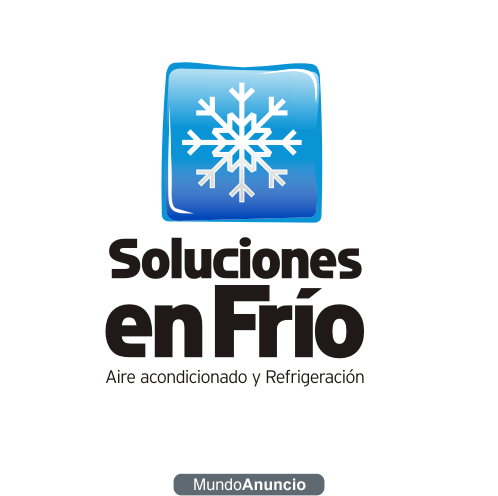REFRIGERACIÓN:
proceso en el que movemos el calor de un lugar nodeseado a uno donde no importa su existencia.
CALOR:
energía que siempre esta en movimiento del cuerpo mas caliente al mas frio.
TEMPERATURA:
modo de medir los efectos del calor.(°C,°F,°K.°R)
PRESION:
fuerza aplicada en una superficie.
ELECTRICIDAD:
flujo de electrones.
REFRIGERANTE:
Un refrigerante es un producto químico líquido o gaseoso, fácilmente licuable, que es utilizado como medio transmisor de calor entre otros dos en una máquina térmica. Los principales usos son los refrigeradores y los acondicionadores de aire.
El principio de funcionamiento de algunos sistemas de refrigeración se basa en un ciclo de refrigeración por compresión, que tiene algunas similitudes con el ciclo de Carnot y utiliza refrigerantes como fluido de trabajo.
Tipos
[editar] Por su composición química
- Los inorgánicos, como el agua o el NH3: Amoníaco
- Los de origen orgánico(hidrocarburos y derivados):
- Los CFC's, Clorofluorocarbonos, perjudiciales para la capa de ozono
- Los HCFC's.Hidrocloroflurocarbonados
- Los HFC's.
- Los HC: Hidrocarburos (alcanos y alquenos)
- Las mezclas, azeotrópicas o no azeotrópicas.
[editar] Por su grado de seguridad
- GRUPO 1: no son combustibles ni tóxicos.
- GRUPO 2: tóxicos, corrosivos o explosivos a concetraciones mayores de 3,5% en volumen mezclados con el aire.
- GRUPO 3: tóxicos, corrosivos o explosivos a concetraciones menores o iguales a 3,5% en volumen.
[editar] Por sus presiones de trabajo
- Baja:
- Media:
- Alta:
- Muy alta:
[editar] Por su función
- Primario: si es el agente transmisor en el sistema frigorífico, y por lo tanto realiza un intercambio térmico principalmente en forma de calor latente.
- Secundario: realiza un papel de intercambio térmico intermedio entre el refrigerante primario y el medio exterior. Realiza el intercambio principalmente en forma de calor sensible.
[editar] Refrigerantes comúnmente usados
- El agua.
- El amoníaco o R717.
- El Glicol
- R11.
- R12.
- R22.
- R23.
- R32.
- R123.
- R124.
- R134a.
- R502.
- R407C.
- R410A.
- R507.
- R517.
FORMAS DE TRASMICIÓN DE CALOR.
CONDUCCION:
contacto directo con el calor.
CONVECCION:
por medio de un ciclo.
RADIACION:
por ondas.
MANERAS DE PRODUCIR ELECTRICIDAD:
magnetismo, friccion, reaccion quimica, eolica, solar, termica, hidraulica, presion.
APARATOS PARA MEDIR LA TEMPERATURA.
TERMOMETRO:
tubo trasparente con escalas que contiene mercurio dentro, que con el calor se dilata y con el frio se encoje, al hacerse esto queda en una linea de las escalas.
APARATOS PARA MEDIR LA ELECTRICIDAD:
amperimetro, voltimetro, ohmetro.
SOLDADURA AUTOGENA:
tipo de soldadura que se manega con una mezcla de dos gases, oxigeno y acetileno o tambien, oxigeno y propano.
COMPRESOR RECIPROCANTE:
compresor que maneja su compresion por medio de un piston,
COMPRESOR ROTATIVO:
realiza la compresion por medio de un ciclo.
RELAY:
aparato que ayuda a realizar una pequeña descarga al borne de arranque del compresor.
PROTECTOR TERMICO:
protege al compresor de una sobredescarga y no se queme.
TERMOSTATO:
interruptor que se activa y desactiva conforme la temperatura.
-----------------------------------------------------------------------------------
BASICS OF COOLING.
COOLING:
process in which move heat from one place nodeseado one where no matter their existence.
HEAT:
energy is always moving body warmer to colder.
TEMPERATURE:
way to measure the effects of heat. (° C, ° F, ° K ° R)
PRESSURE:
force applied to a surface.
ELECTRICITY:
electron flow.
REFRIGERANT:
A refrigerant is a liquid or gaseous chemical, easily liquefiable, which is used as heat transfer medium between two other in a heat engine. The main uses are as refrigerators and air conditioners.
The principle of operation of some refrigeration systems is based on a compression refrigeration cycle, which has some similarities with the Carnot cycle and used as a refrigerant working fluid.
type
[edit] On the chemical composition
Inorganics, such as water or NH3: Ammonia
The organic origin (hydrocarbons and derivatives): The CFC's, chlorofluorocarbons, harmful to the ozone layer
HCFC's. Hidrocloroflurocarbonados
The HFC's.
HC: hydrocarbons (alkanes and alkenes)
Mixtures, azeotropic or azeotrope no.
[edit] On the level of safety
GROUP 1: non-combustible or toxic.
GROUP 2: toxic, corrosive or explosive concetraciones greater than 3.5% by volume mixed with air.
GROUP 3: toxic, corrosive or explosive concetraciones less than or equal to 3.5% by volume.
[edit] For his work pressures
low:
Media:
Added:
Very high:
[edit] By function
Primary: if the transmitting agent in the refrigeration system, and therefore performs a heat exchange mainly in the form of latent heat.
Secondary: performs a role of intermediate heat exchange between the coolant and the external environment. Make the exchange mainly in the form of sensible heat.
- Can be harmful to the ozone layer: ODP index and help the greenhouse effect: GWP index
[edit] Commonly used Refrigerants
Water.
Ammonia or R717.
the glycol
R11.
R12.
R22.
R23.
R32.
R123.
R124.
R134a.
R502.
R407C.
R410A.
R507.
R517.
DRIVING:
direct contact with heat.
CONVECTION:
through a cycle.
RADIATION:
wave.
WAYS OF PRODUCING ELECTRICITY:
magnetism, friction, chemical reaction, wind, solar, thermal, hydraulic, pressure.
APPARATUS FOR MEASURING THE TEMPERATURE.
THERMOMETER:
transparent tube with scales containing mercury in which the heat expands andshrinks with the cold, to be done is in a line of scales.
APPARATUS FOR MEASURING THE ELECTRICAL:
ammeter, voltmeter, ohmmeter.
Gas Welding:
type of welding Manega with a mixture of two gases, oxygen and acetylene or also, oxygen and propane.
RECIPROCATING COMPRESSOR:
compressor which handles its compression by means of a piston,
COMPRESSOR ROTARY:
compression is done by means of a cycle.
RELAY:
device that helps make a small download to boot the compressor terminal.
THERMAL PROTECTOR:
protects the compressor from an over-discharge and does not burn.
THERMOSTAT:
switch that turns on and off as the temperature.
